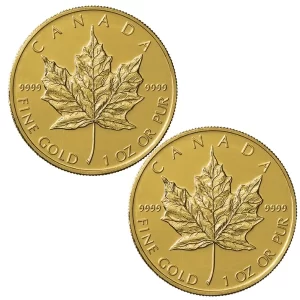When investing or trading in precious metals, understanding the nuances of measurements is crucial. Whether you’re a seasoned investor or a newcomer to the world of bullion, getting a grip on the commonly used units of measure will not only help you make informed decisions but also prevent misunderstandings and potential financial pitfalls. In this guide, we’ll delve into the distinction between ounces and grams, two of the most commonly used units of measurement in the precious metals world.
The Basics: What Are Ounces and Grams?
Ounces (oz): An ounce is a unit of weight commonly used in the U.S. and a few other countries. It originates from the Roman ‘uncia’. Notably, in the precious metals market, we often hear about the “troy ounce,” which is different from the “avoirdupois ounce” typically used to measure most other goods in the U.S.
Grams (g): A gram is a metric unit of mass or weight and is used worldwide. It is the base unit of mass in the International System of Units (SI). One kilogram is equivalent to 1,000 grams.
Ounces: The Troy vs. Avoirdupois System
Troy Ounce (ozt): The troy ounce is heavier than the avoirdupois ounce. It weighs about 31.1035 grams. Precious metals like gold, silver, and gemstones are commonly weighed in troy ounces.
Avoirdupois Ounce (oz): This is the more common ounce and is used in the U.S. for almost everything except precious metals. One avoirdupois ounce is equivalent to about 28.3495 grams.
Given the differences in weight between the two types of ounces, it’s vital to ensure you’re using the correct unit when buying or selling precious metals. This can help mitigate fraudulent gold and silver that is circulating out there.
Grams: The Universal Metric
Grams, being a part of the metric system, are straightforward. They’re universally accepted and have the same weight everywhere. Because of its universality and precision, many international bullion dealers and markets use grams or kilograms, especially when dealing in larger volumes.
Converting Between Ounces and Grams
When switching between troy ounces and grams or trying to understand the weight of a particular precious metal product, these conversion figures will come in handy:
1 troy ounce = 31.1035 grams
Why It Matters
Understanding these measurements is more than just academic. Mistaking a troy ounce for an avoirdupois ounce can lead to miscalculations in pricing or the amount of metal you think you’re obtaining. When dealing with commodities as valuable as gold or silver, even small misinterpretations can lead to significant financial disparities.
In Conclusion
Whether you’re considering an investment into the precious metals market or just want to understand the intricacies of measurements, it’s vital to grasp the differences between ounces and grams. Always double-check which unit of measurement is being used when purchasing, selling, or trading precious metals to ensure accuracy and protect your investments.
Remember, knowledge is not just power; in the world of precious metals, it’s also wealth.
 Hi,
Hi,






















